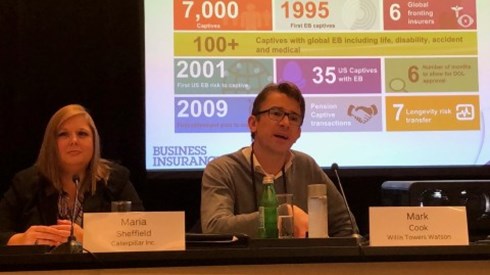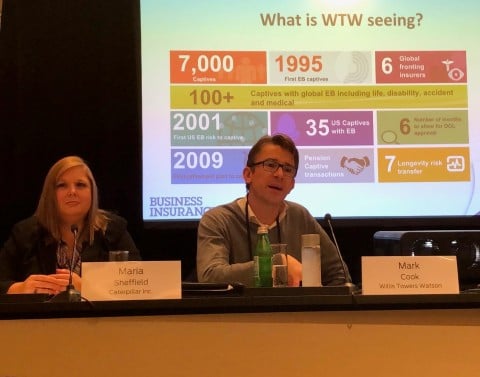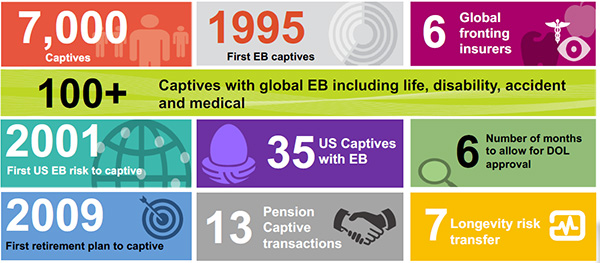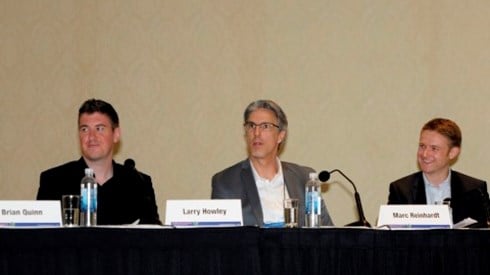Global Employee Benefits in Captives Increasing

February 19, 2019

While only a sliver of captive insurance companies fund their parents' employee benefit risks, the number is growing as more companies understand the advantages of that approach, experts say.
Exact figures are not available, but well over 100 employers around the world now fund benefits through their captives. In the United States alone, about two dozen employers have received approval from the US Department of Labor to fund benefit risks, such as group term life insurance and long-term disability, through their captives.
 Above graphic is reproduced with the permission of Willis Towers Watson.
Above graphic is reproduced with the permission of Willis Towers Watson.
These figures are expected to increase in the years ahead, a panel of experts said at a World Captive Forum session, "Global Employee Benefits," held in Miami, Florida in January.
"We are seeing a big interest in this market," said Ricardo Almeida, regional director of the Americas for Maxis GBN.
One of those companies is Caterpillar Inc., the big Deerfield, Illinois-based manufacturer of construction and mining equipment and diesel and natural gas engines, which is actively considering funding benefits through one of its captive insurance companies.
Funding benefits through a captive is "something Caterpillar probably has been thinking about for nearly 20 years now," said Maria Sheffield, Caterpillar's insurance corporate counsel, adding that the firm has retained an international benefits consulting firm to help move the captive benefits funding project along.
One company that has been funding benefit risks through captives for decades is Deutsche Post DHL, said Bill Fitzpatrick, DHL's London-based vice president of corporate risk benefits. DHL has been funding benefit risks for non-US employees since the mid-1990s and, in 2008, received permission from the US Department of Labor to fund long-term disability benefits through the Vermont branch of a Bermuda captive owned by a Deutsche Post affiliate.
Funding benefits through captives can result in significant cost savings for employers since the captive sponsor will no longer have to pay—unlike buying coverage in the traditional market—premiums to commercial insurers or fees to brokers handling he coverage, Mr. Fitzpatrick said.
One issue employers funding benefits risks through their captives have to consider, though, is how much the risk their captives will assume and how much will be reinsured through commercial insurers.
"You have to know your risk tolerance," Mr. Fitzpatrick said.
Pictured above are Maria Sheffield, corporate counsel, Caterpillar Inc. (left), and Mark Cook, senior director, Willis Towers Watson (right).
February 19, 2019




